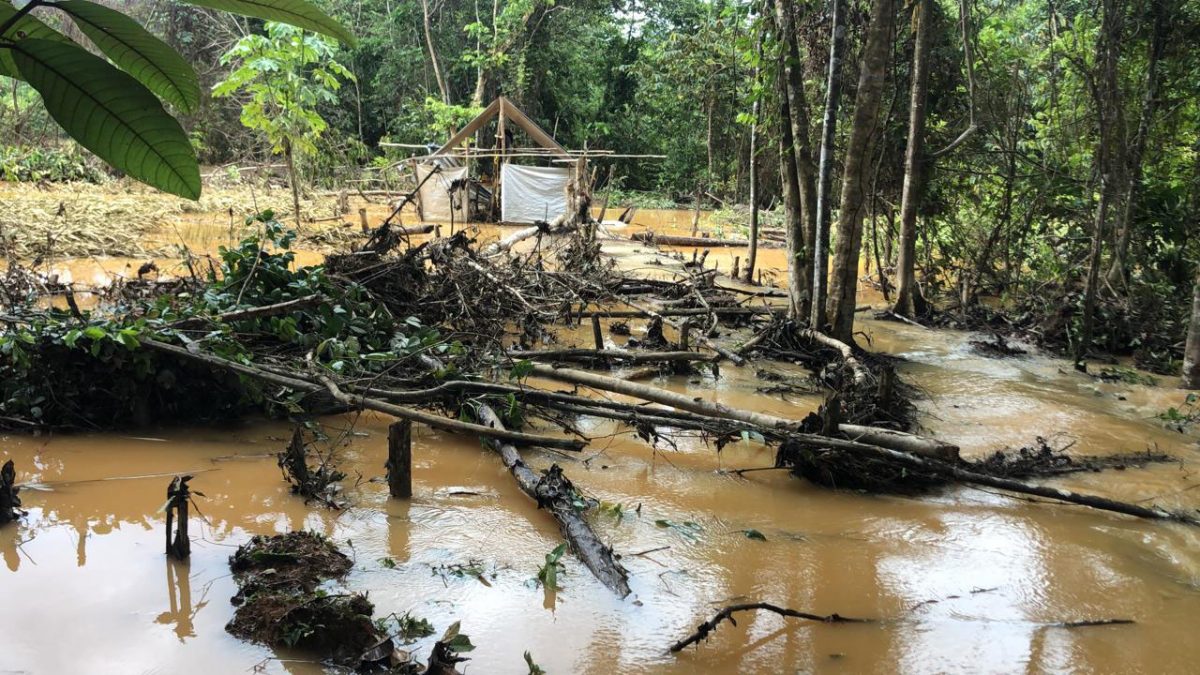Seven families in Matthews Ridge have been affected by flooding after the reservoir belonging to Chinese-owned Guyana Manganese Inc (GMI) collapsed.
Speaking on behalf of Regional Chairman Brentnol Ashley, a Region-al Democratic Council (RDC) official told Stabroek News that the water has completely receded from the areas that were affected. Assessments done revealed that seven families were affected with two homes being completely flooded.
GMI assisted the families by distributing food hampers and in one case compensated an elderly man whose clothes were washed away with $30,000.
Kitchen gardens and farms were also affected. According to the official, roads were damaged however, GMI has since addressed this issues and traffic has begun flowing. In addition, the official said, the company has begun constructing a bridge so that families that were living on the other side of the dam can access the community.
Mining, which recently restarted in the area, has been halted and the GMI has begun putting plans in place to repair the reservoir.
Meanwhile, the Environmental Protection Agency (EPA), in a brief statement, said that it was notified of the breached reservoir known as Pakera Lake, at GMI’s Matthews Ridge operation. An emergency team was dispatched to the area to assess the situation and it was determined that there was no immediate environmental threat.
On Thursday at around 10.30 am, the reservoir collapsed, releasing a torrent of water that forced some families to climb trees in order to survive. The GMI security guard alerted the residents of Matthews Ridge that part of the mining company’s reservoir had collapsed and residents immediately gathered at the area but could do nothing to avert the disaster.
GMI, which had to be shut down after the sudden death of two of its workers and the air-dashing of 10 others to China in 2019, had its Environmental Impact Assessment (EIA) for the Region One project approved by the Environmental Protection Agency (EPA) in May of this year.





